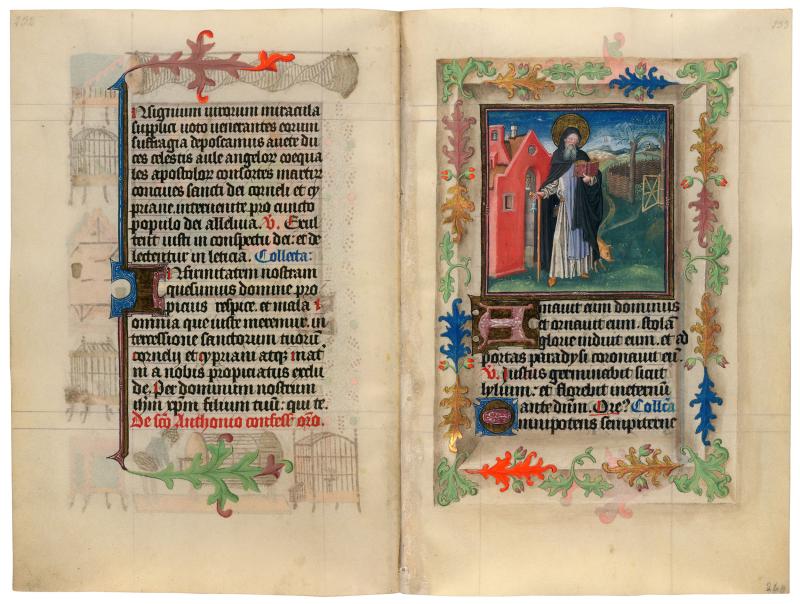
St. Anthony
Purchased on the Belle da Costa Greene Fund with the assistance of the Fellows, 1963
Anthony reads from an open book while leaning on a cane. The cane has a bell hanging from its handle additional bells hang from the neck of the pig and in the belfry of the pink building to his right. That building and the enclosure surrounded by a woven fence might allude to twenty years the saint spent at Fort Pispir where he spurned the company, or even the sight, of other men. Because of both his asceticism and the community of disciples that grew up around him during his self-imposed isolation, Anthony represents the founding of Christian monastic practice. The artist shows his virtuosity by minutely capturing the atmospheric effects of the swirling haze that obscures the castle in the far background.
